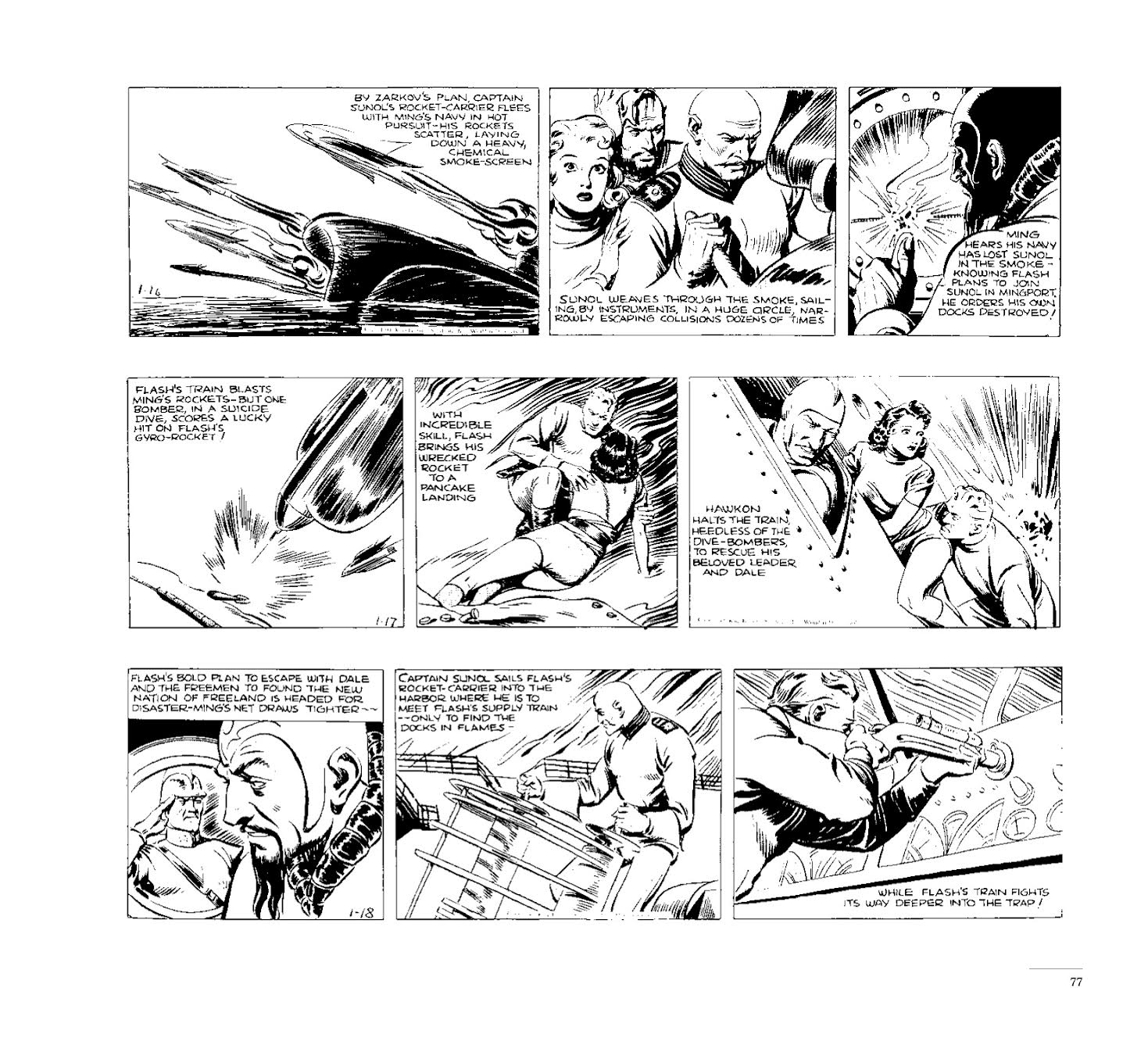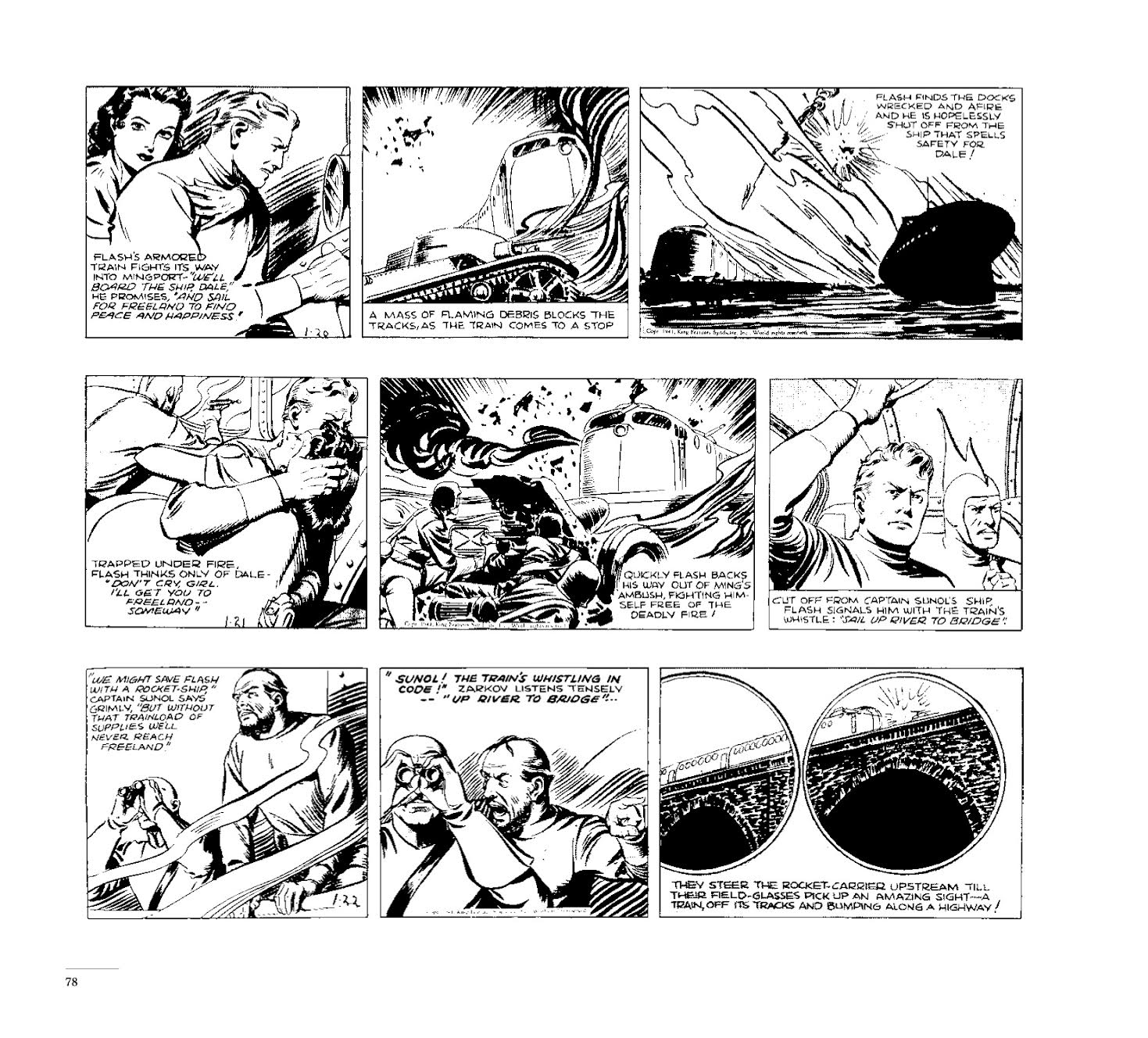The golden age of newspaper comic strips was a glorious time for imaginative readers, with iconic runs of Superman, Prince Valiant, Buck Rogers, and of course Earth’s fair-haired space adventurer, Flash Gordon.
Gordon, the handsome Yale University alumnus and celebrity polo player, first appeared as a King Features Syndicate strip in January of 1934. Created and drawn by Alex Raymond, Flash Gordon embarked on a daily series of other-worldly escapades with his beloved Dale Arden and Dr. Hans Zarkov as they battled the planet Mongo’s nefarious villain named Ming The Merciless.
The official strip ran in hundreds of papers around the globe from 1934-1992, with full-color Sunday strips being published until 2003. Numerous adaptations of the characters have been seen in comic books, games, serialized TV shows, episodic radio programs, and even a big-budget disco-era feature film infused with a galaxy-saving Queen soundtrack.
A new 276-page illustrated hardcover titled “Flash Gordon Dailies: Austin Briggs – Radium Mines Of Electra” coming Feb. 15 is the latest release in Titan Books’ exceptional catalog of deluxe Flash Gordon collections.
This upcoming edition gathers for the very first time more than two-years of comics from the early 1940s that transport readers back to a lost era of daring heroes, alien creatures, strange beasts, laser pistols, rocket ships, dames in peril, and rousing sci-fi spectacle.
Arriving in comic shops and bookstores on Feb. 15, Titan’s premium volume showcases the superb writing of Don Moore and dynamic pencil work courtesy of artist Austin Briggs as the creative duo reveled in the pulpy sci-fi fare in the heyday of their industry.

Moore was the acclaimed wordsmith behind Flash Gordon’s newspaper appearances for over two decades, stepping in for legendary creator Alex Raymond in August 1935. Moore had previous experience as a pulp editor, had formed the Nassau News Bureau, and later plied his trade as the fiction editor for Cosmopolitan magazine and story editor for Screen Gems television.
After penning an impressive run of “Flash Gordon” strips, he continued in Tinseltown as a respected TV writer for “Captain Video,” “Rawhide,” “Sea Hunt” and “Death Valley Days.”

As his creative cohort, Briggs began delivering illustrations for the well-known pulp magazine “Blue Book” prior to becoming Alex Raymond’s assistant on “Flash Gordon.” Then in 1940, Raymond passed on the mantle of daily “Flash Gordon” strips to Briggs, where he remained until 1944.
His fine linework and illustrations were viewed on other projects by millions inside periodicals like Readers Digest and The Saturday Evening Post.
Titan Books’ “Flash Gordon Dailies: Austin Briggs – Radium Mines Of Electra” lands Feb. 15.
Follow us on Twitter @Spacedotcom and on Facebook.

